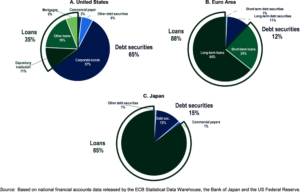Facing Financial Difficulties? New Rescue Process For Small Companies
New Rescue Process For Small Companies
The Government has launched a new rescue process for small and micro companies, known as the New Save Procedure. This process is an alternative to examinership. It is expected to be more effective and cheaper than examinership and will give SME’s a real chance to restructure. The government’s goal is to increase the number of companies that successfully navigate the system. The new procedure will help businesses that are facing financial difficulty.
Unlike bankruptcy, the New scarp rescue Process for Small Companies will require little or no court involvement. The small company administrative rescue process is an alternative to examinership and involves less court supervision. This process is designed to help companies that are experiencing financial difficulties continue to trade as a going concern. This means that the bankruptcy process will be shorter than other methods. Moreover, it will be less expensive than other methods of resolution.

The new process is a way for small businesses to restructure. It is a statutory process that involves the courts only in certain circumstances. Those circumstances include replicating Examinership protections, removing the receiver, determining the terms of the rescue plan, and granting fees. The Process Advisor must nominate the Circuit or the High Court as the relevant jurisdiction. However, it is important to note that during this period, creditors are not allowed to take any legal action against the company.
Facing Financial Difficulties? New Rescue Process For Small Companies
The new Rescue Process for Small Companies (SCARP) was launched on Tuesday 7 December and is similar to examinership, with a difference. Instead of court involvement, the process adviser plays the role of the court. This new law aims to make the SCARP more cost-effective and accessible to smaller businesses. It will be available to all companies with balance sheets under EUR6m and fewer than 50 employees.
Unlike its predecessor, SCARP is a lower-cost alternative for small companies. It involves the transfer of voting rights to a guarantor. But the SCARP process can be costly, so it is important to understand how it works. A guarantor may be able to help save a business. Despite its advantages, the new rescue process for small companies is an excellent option for companies that are struggling with financial problems.
A new SCARP will help small companies with their financial problems. This new scheme will save jobs and make the process less complex for the company. The SCARP is available to all businesses, regardless of size. But it is not open to all businesses. Even if your SCARP application is approved, the SCARP can save your small business. For a full analysis of SCARP, visit www.gov.gov/SARP.